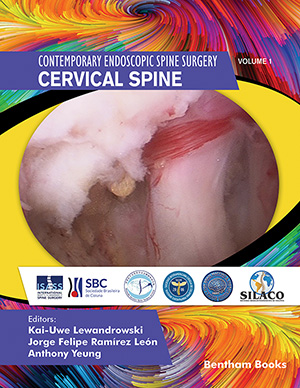Abstract
Full endoscopic surgery of the cervical spine is done in select centers where the clinical and surgical expertise is high. The procedure can be potentially dangerous in less well-trained hands, with the prospect of damage to vital vascular structures, and injury to the trachea, esophagus, cervical nerve roots, and the spinal cord. Also, cervical endoscopy is competing with traditional spinal surgeries, such as anterior cervical discectomy and fusion, or posterior cervical foraminotomy, whose clinical outcomes are reliably favorable. Therefore, most surgeons have a hard time replacing their well-performing anterior- or posterior cervical surgeries that they may very well be carrying out through open or mini-open incision or other forms of minimally invasive spinal surgery techniques. Patient satisfaction with these procedures is generally very high, and the complication rate is relatively low, and their management is well-understood. Again, is there a need for change? It is apparent that to the innovators, the answer to this question is obviously “yes” because they are looking for practical, yet less burdensome, lower cost, and more simplified outpatient cervical spine surgeries. The general push by payors and patients to transition spine care from in- to outpatient setting requires spine surgeons to rethink their approach to treating common degenerative conditions of the cervical spine. New algorithms based on updated classification systems and clinical outcome analysis of contemporary surgical techniques are required to make this transition feasible. In this chapter, the authors illustrate the application of full-endoscopic cervical spine surgery techniques, reviewing their indications, and the clinical decision-making by discussing the rationale for the procedure of choice selection ranging from patient criteria, anatomical considerations, surgeon training-, and skill level. This chapter is intended to serve as a guide for the established spine surgeons who are yet inexperienced with endoscopy and evaluates whether full endoscopy of the cervical spine should be in their armamentarium.
Keywords: Cervical endoscopy, Cervical herniated disc, Cervical stenosis, Clinical decision making algorithms, Myelopathy.






















